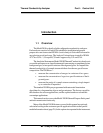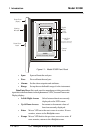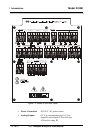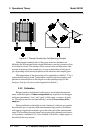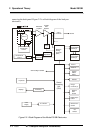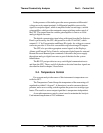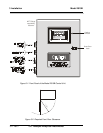
Part I 2-1
Thermal Conductivity Analyzer Part I: Control Unit
Teledyne Analytical Instruments
Operational Theory
2.1 Introduction
The analyzer is composed of two subsystems:
1. Thermal Conductivity Sensor
2. Electronic Signal Processing, Display and Control.
The sensor is a thermal conductivity comparator that continuously
compares the thermal conductivity of the sample gas with that of a reference
gas having a known conductivity.
The electronic signal processing, display and control subsystem simpli-
fies operation of the analyzer and accurately processes the sampled data. A
microprocessor controls all signal processing, input/output, and display
functions for the analyzer.
2.2 Sensor Theory
For greater clarity, Figure 2-1 presents two different illustrations, (a)
and (b), of the operating principle of the thermal conductivity cell.
2.2.1 Sensor Configuration
The thermal conductivity sensor contains two chambers, one for the
reference gas of known conductivity and one for the sample gas. Each
chamber contains a pair of heated filaments. Depending on its thermal
conductivity, each of the gases conducts a quantity of heat away from the
filaments in its chamber. See Figure 2-1(a).
The resistance of the filaments depends on their temperature. These
filaments are parts of the two legs of a Wheatstone bridge circuit that unbal-
ances if the resistances of its two legs do not match. See Figure 2-1(b).



